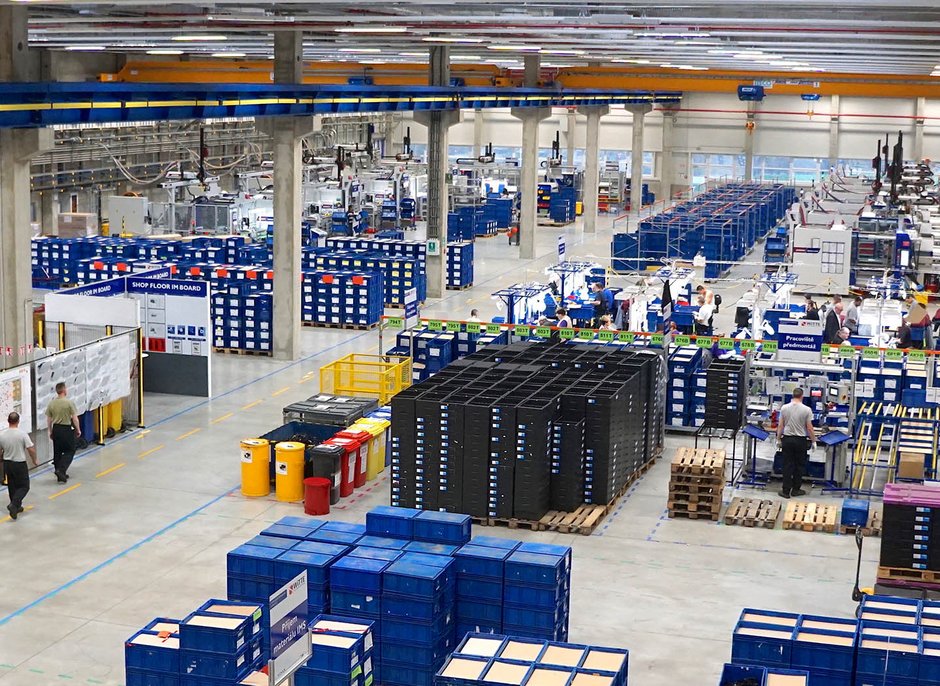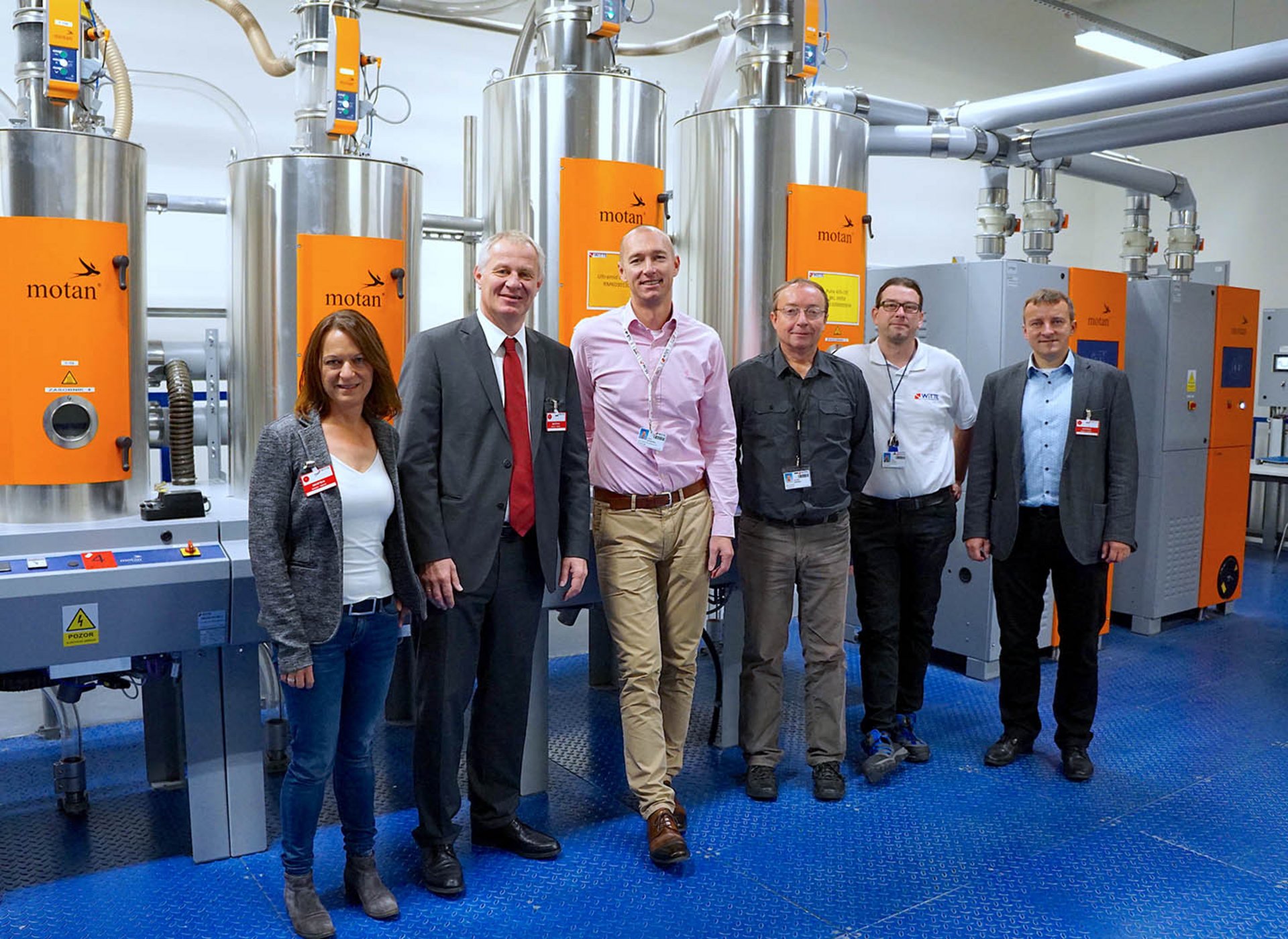A Key to Success
The WITTE factory in Ostrov, North Bohemia, Czech Republic, newly opened in 2016, specialises in the manufacture of door handle units and the associated technical modules in a production alliance with the factory in Nejdek, located 20 kilometres away. In Ostrov, the main focus is on plastic injection moulding, lacquering and assembly. One main plant component is the highly automated central system for conveying plastic granulate to the injection moulding machines. It was supplied by the German motan Group and planned and assembled by its Austrian agent Luger GmbH.
The variety of shapes, colours and functions of the exterior door handles and locking units produced by WITTE Automotive Czech plant is impressive. They comply with existing crash safety regulations, are available with and without remote control as well as keyless “Passive Entry/Passive Go” operation and coordinated with the specified car colour of each order. The range is completed with the patented “anti-picking” measures. The WITTE Automotive range extends far beyond exterior handles; it also includes strikers, internal door handles, keys and locks, closing aids, door checks and door brakes, door drives and door protect systems.
The range of products for bonnets and hatches is equally comprehensive. In addition to electro-mechanical locks, electrical strikers for motorised hatches or easy-fit handles are used. In particular, the solutions developed for bonnets combine complex exterior contours with a compact and sturdy design. For example, they are part of a concept for an “active” bonnet to increase protection of pedestrians in the event of a collision by using pyrotechnic actuation to raise the bonnet, thereby softening the front crush zone.
A comprehensive range of car seats is also available. “Energy-absorbing backrest latches and strikers minimise the load on the backrest in the event of a crash. They are part of the safety equipment for occupant protection. New seat-to-floor latches for convenient removal and installation of seats as well as the active safety backrest system (ASR) complete the WITTE range,” says David Svoboda, Division Manager Injection Moulding, in his company presentation.
Uncompromising Quality of Plastic Parts
The handle modules are produced as “car sets”. A set is comprised of all door handles of a vehicle including the functions behind them. For reasons of strength, the structural parts are made of PA6 with 35 per cent fibreglass and the covers of a PC/ABS blend. Only pre-coloured material is used. Production is currently carried out on 12 injection moulding machines and there are definite plans for 10 more.

A majority of the handles are produced as hollow bodies using gas injection technology. This requires that in each production cycle a material percentage of 30 to 40 per cent of the injected plastic volume is forced into an overflow cavity, which is subsequently separated, collected and returned to the material flow after shredding. “To aid surface quality, all materials, both virgin material and regrind, must be dried to a residual moisture content of 0.1 to 0.15 per cent (PA6) or 0.02 to 0.05 per cent (PC/ABS),” explains Pavel Karas, Head of Department of Injection Moulding at the Ostrov factory, on a tour of the production department along the material conveyor. “Therefore, we only considered one system layout in which all processed types of plastic, including regrind, quantities are fed to the machines with dry air via a central drying system.”
As much as the drying system is the “heart” of the material supply system in terms of application, the material feed on the injection moulding machine is so easy. A mixing unit was mounted on the machine to mix virgin material with regrind and an additive. Below the dosing unit there is a metal detector in order to separate any knife chips contained in the regrind. For technical details of the machine, please refer to the machine profile below.
Complete Machine Transparently Operable via Master Production Computer
All machine components, with the exception of the dosing units on the injection moulding machines, are activated and operated via the electronic modules specifically developed by motan for this purpose. They are connected to a ControlNet of the central machine control via Ethernet or TCP/IP. This is combined with the comprehensive plant management system LINKnet which collects and records the processes and application data and from which all connected controls up to the device level can be operated. An interface to the existing ERP (Enterprise Resource Planning) system was also implemented.

Finally, Head of Division Mr Svoboda, in his resumé at the start of production, summed up the essential criterion for the decision in favour of motan: “In view of the tight schedule for the construction and commissioning of our new production plant, it was important to us to minimise the technical risk for as many system components as possible. After a series of impressive reference visits, we finally decided on motan-colortronic as our system supplier and Luger as our system planner and service partner - and we were not disappointed.”.
